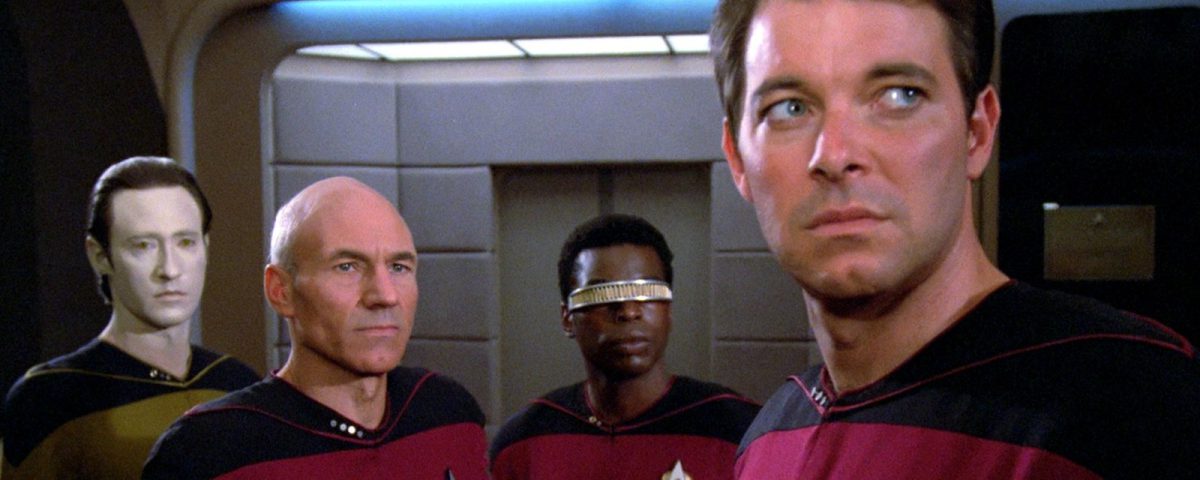Why Star Trek’s Low-Budget Episodes Are An Essential Part Of The Franchise

Lilo & Stitch live-action remake: Release date, plot, & everything we know
December 28, 2024
The Massive Sci-Fi Flop That Nearly Starred A Young Glen Powell
December 28, 2024Why Star Trek’s Low-Budget Episodes Are An Essential Part Of The Franchise
Current Star Trek overseer Alex Kurtzman feels low-budget episodes are actually essential to what makes the sci-fi franchise tick.
Full Article
The makers of “Star Trek” will likely complain about the many budgetary limitations they faced while in production on their respective shows. A lot of money went into filming starship exteriors, compositing, and photographic transporter effects back in the day, which left little room for the writers to get ultra-ambitious with their stories. Sometimes an episode’s filmmakers would trek out to a location shoot in the California desert, or hire a notable guest star to play a striking villain, but for the most part, “Star Trek” makers were mostly bound to the same five or six sets that they had already built on the CBS production lot. This required the show’s writers to invent stories that took place in — for “Star Trek: The Next Generation” — a hallway, a turbolift, engineering, sickbay, the bridge, or Ten Forward. Of course, as the old saying goes, necessity is the mother of invention. With only a few sets to work in, and recycling all the same props and uniforms they used every week, the writers had to get creative. Indeed, when one cannot focus on epic battles, complicated space phenomenon, and a raft of CGI aliens, the writers were forced to dwell on individual characters, their complex interactions, and their growth as individuals. “Star Trek” is, after all, a workplace show first and foremost, so it makes logical sense that the bulk of episodes should, at least on some level, be about evolving workplace dynamics between employees and managers. Staying in one place allows those dynamics to develop and, by extension, make the show more interesting. The current head honcho of “Star Trek,” Alex Kurtzman, agrees with this sentiment. In an interview with Collider, he admitted that the soul of “Star Trek” comes through in the show’s cheaper episodes. Kurtzman still likes making expensive epics from time to time, but that characters only grow when the action slows down.
In the interview, several of the “Star Trek: Discovery” producers laid out a few dry details about the way their “Star Trek” show is budgeted. Michelle Paradise noted that the premieres and finales should be appropriately “big,” and those episodes tend to get the lion’s share of a season’s budget. She also noted that when one episode goes over-budget in between the premiere and the finale, the money will have to be cut from another episode; the price tags are, it seems, pretty non-negotiable. Kurtzman, meanwhile, admitted that he celebrated the “little” episodes more, as he felt they were the only place where character development tended to happen. In his own words: “I think from a dramatic perspective, it’s great because it forces you to tell stories that are just focused on character. Nothing else. If you say like, ‘Sorry, you don’t get any explosions this episode, you don’t get anything, any of the bells and whistles. You just have to write people in a room.’ It forces your brain into a different space than you’re usually in, which is a great thing. If you’re doing it right, it’s a great thing for character.” And he’s right about that. So-called “bottle” episodes depict the characters when they’re not in “crisis mode,” and audiences often get to see what their day-to-day lives are like, what their hobbies are, or how boring their jobs can be from time to time. Knowing those things allows audiences to appreciate the crises all the more, letting us see how the characters remain skilled and professional even in a pinch.
The tendency of modern TV is to tell serialized stories over a long period of time. Entire seasons can follow a single storyline, and sometimes the story won’t conclude until the final episode of the series. “Star Trek” has tried this approach with “Star Trek: Discovery” and “Star Trek: Picard,” but hasn’t been entirely successful with either. More traditionally episodic shows like “Star Trek: Strange New Worlds” and “Star Trek: Lower Decks” have benefited from a “story of the week” approach, allowing each tale to conclude after 30 or 60 minutes. An episodic structure helps “Star Trek.” In addition to Kurtzman’s comments about character growth, bottle episodes also infuse the franchise with a vital status quo. “Star Trek” takes place in the distant future, and it’s important to communicate to audiences what an average day looks like on the Discovery or the Cerritos or the Enterprise. In a sci-fi universe, it’s important to know what’s “normal.” Also, “Star Trek” is an incredibly technical franchise, one that boasts many, many scenes of characters tapping computer panels, climbing into Jeffries tubes, and manipulating machinery. In bottle episodes, Trekkies witness the same characters going to the same computers every week, entering their passwords and getting crap done. It gives viewers a sense that a Federation starship is a massively complicated machine with billions of moving parts, each one overseen by specialized technicians who have to constantly update and maintain them. Bottle episodes give viewers a sense that they, too, could operate the Enterprise if given the chance. Also the complicated tech make a wondrous piece of machinery like a starship seem that much less fantastical. They now feel real. These are all benefits of stand-alone stories.

